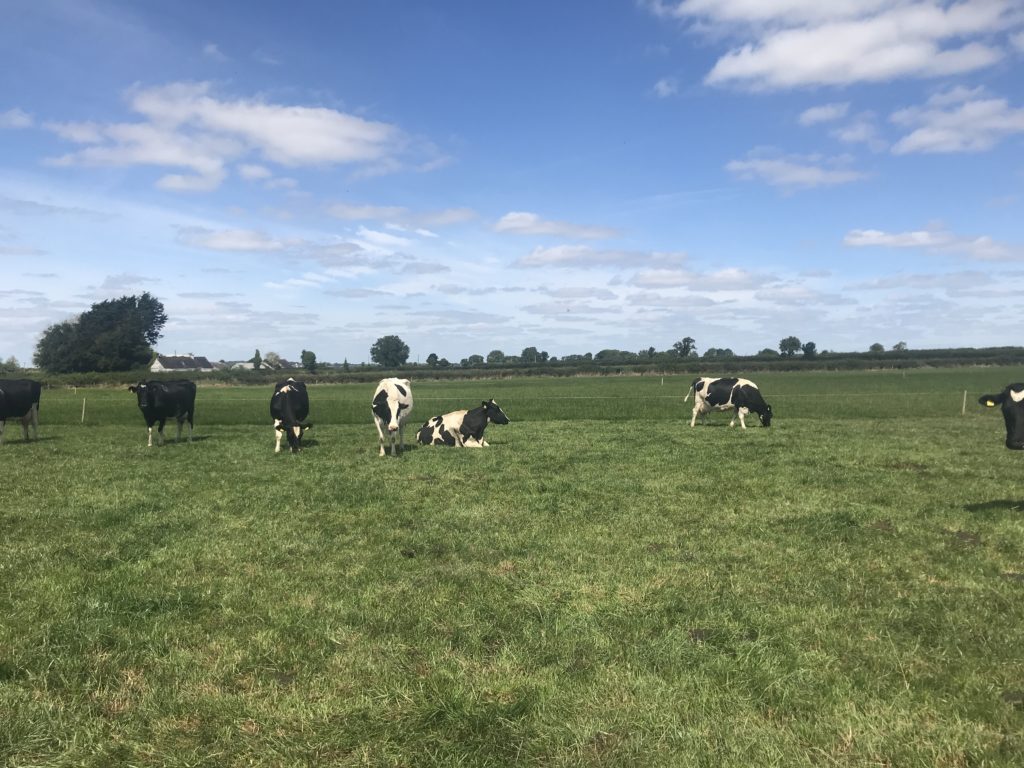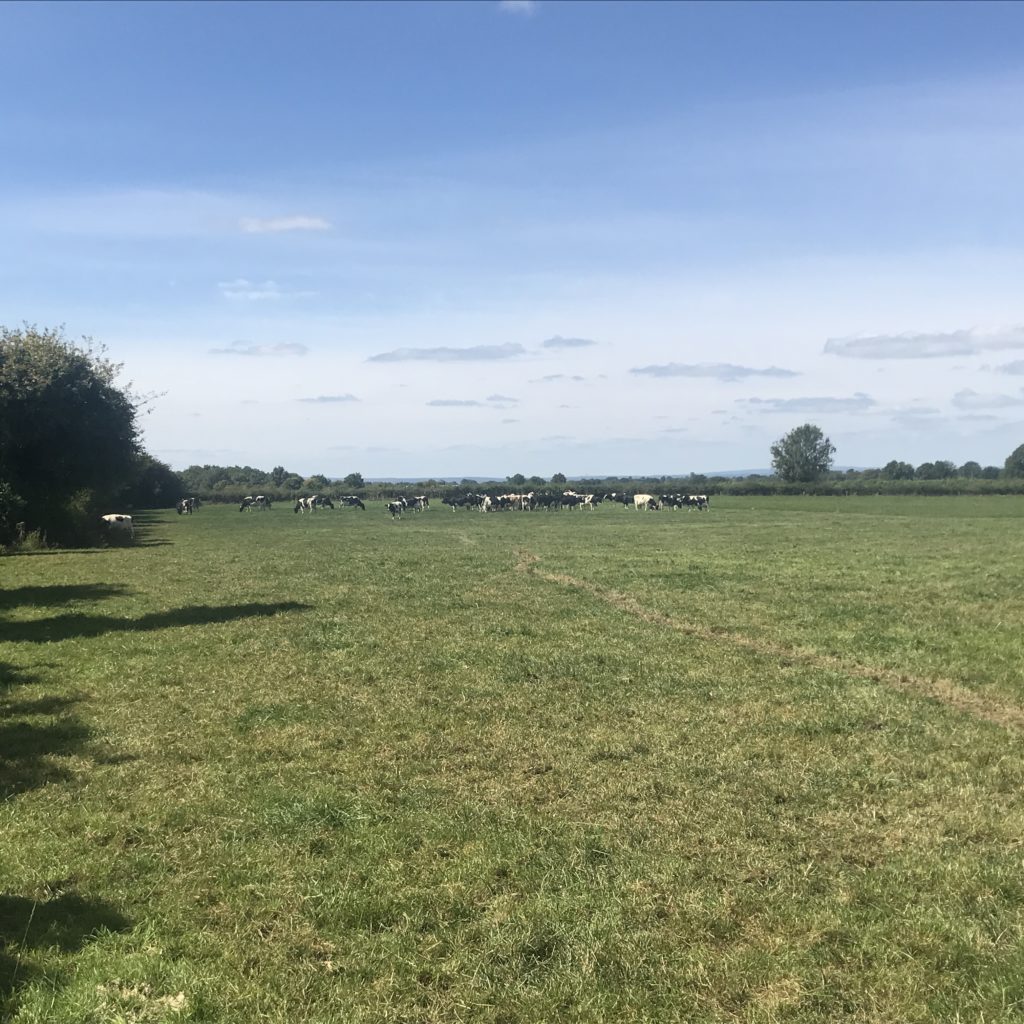For this week’s Dairy Focus, Agriland made the trip to the Premier County, to the dairy farm of Cathal Tighe.
Alongside his father Charlie in Aglish, Co. Tipperary, Cathal is milking 60 Holstein Friesian-type cows on 100ac.
Cathal has recently completed his degree in Agricultural Science from Atlantic Technological University (ATU) in conjunction with Mountbellew Agricultural College and has returned home to farm.
The family has only recently returned to milking cows, as the farm was leased out for a number of years before becoming a beef enterprise for a while.

Dairy focus
Cathal has always had an interest in farming, but his real passion for dairying came from going to his uncle Pat’s farm as dairy production ceased on the home farm before he was born.
He also grew up listening to stories from his grandmother and father about when cows were on the home farm.
Cows were milked on the farm up until 1997 by Cathal’s father, with 45 cows being milked at the time.
Due to issues with quota, the family exited milk production and some of the farm was then leased out.
Cathal’s father worked off-farm and later set up his own company, but as his son’s interest in farming grew, the farm was taken back and reseeded, with bullocks being bought to fatten.
They then moved into buying dairy-cross Hereford and Angus calves and bringing them to beef.

College
Cathal went to ATU, formally Galway Mayo Institute of Technology (GMIT), and started studying business studies. However, he found it wasn’t for him.
He was able to transfer into the agricultural science course at the college where his passion for dairying continued to grow.
“It was the best four years of my life,” Cathal said.
As part of the course Cathal went to New Zealand on placement, where he worked on two large dairy farms.
On his return to Ireland he began to lay plans to return to dairy production on the home farm.

Return to cows
Cathal began drawing up plans for the farm. After a discussion with his father, they decided to aim for 50 cows to start with.
Commenting, Cathal said: “We began looking for cows and came across a herd in Co. Kerry, which were the type we want and had potential.
“So we purchased the 45 cows and began milking cows here in October 2020, which was a strange time to start – but it was a fair moment.”
Calving began in 2021 as the Tighe family headed into their first full year in milk production since the 1990s.
There was an existing parlour on the farm which, with some purchases, was good enough to get Cathal going.
Cubicles were also constructed, with the building cost done on a budget to keep overall costs down.



Commenting, Cathal said: “We wanted to start with a herd of cows to get the best return from them; I also wasn’t keen on training in a herd of heifers in the parlour.
“It’s a narrow parlour and with concrete troughs, the heifers could stand on them. Next year is the first year I’ll have heifers coming in.
“The cows are well trained into the parlour and they should keep the heifers in check.”



Cow type
Cow type was important to Cathal, with a 60:40 spilt Holstein to Friesian being the cow he was looking for.
Cathal was looking for a 6,000-6,500L cow achieving 500kg of milk solids, which he believes will be most profitable for his farm.
“The most important thing was that the herd had potential and I think that is exactly what we brought,” he said.
“I wouldn’t be exclusively following economic breeding index (EBI), but I do see the benefit of it and the cows we bought had an average EBI of €133.
“It has been a major change for us; I would compare it to doing a masters.
“The buck stops with you; my father has great knowledge from growing up around cows so he is a great help.
“I am also very thankful that he has let me work away and given me almost a farm manager role.
“But you never really switch off from the cows, there is always something happening.”


CAP
Irish agriculture is facing a number of challenges at present, including the new Common Agricultural Policy (CAP) and emission targets.
Giving his opinion on this, Cathal said: “I feel that young farmers and farmers in general have [been] completely disenfranchised by many of the changes we are hearing about.
“We are getting no benefit for the all the carbon we are sequestering.
“We have a lot of building work to do here in the next few years and one thing I was very excited about was generating electric from solar panels and that has been taken away from us,” he said.
“They have also missed an opportunity for farmers to have anaerobic digesters to offset carbon and supply electric to the grid.
“Instead of being brought along, we have been completely disenfranchised and in my opinion it will be the smaller farmer that will suffer.
“To be honest I am very lucky that I got into cows at the time that I did; if it had been 18 months later it would of been much more difficult.”

10-year plan
Getting back into milk production is only really the start of Cathal’s plans for the farm.
“I know it sounds cliche, but I want to milk the maximum number of cows we can on the farm,” he explained.
“I would like to think that I can get up to 90 cows here and continue to improve the farm’s infrastructure.
“We have done a lot work to roadways this year, but there is more to do.”
Commenting further he said: “We will also have to look at the milking parlour and cubicles.
“The topless cubicles, I am not a fan of – but they serve a purpose.
“I would like to put in a 65-70-cow cubicle shed and have a 10- or 12-unit milking parlour.
“Over the next 10 years I want to get the farm really well set up,” he said.

Dairy Focus
To read more Dairy Focus articles on Agriland, click here.
